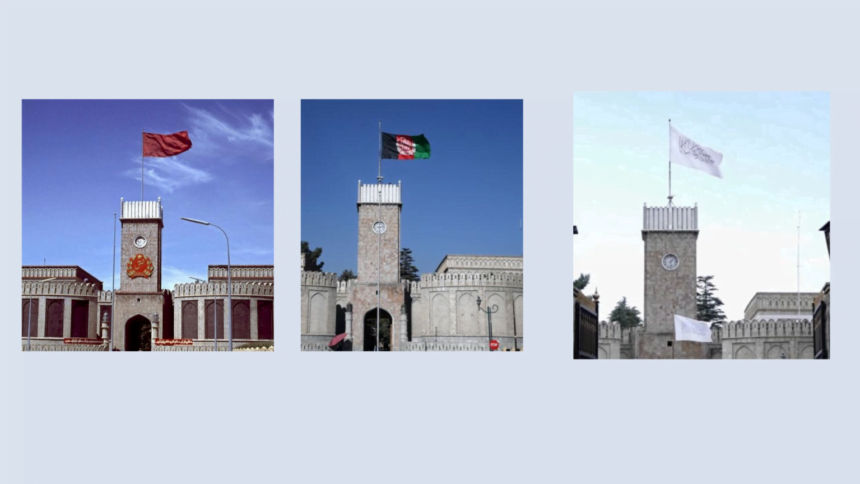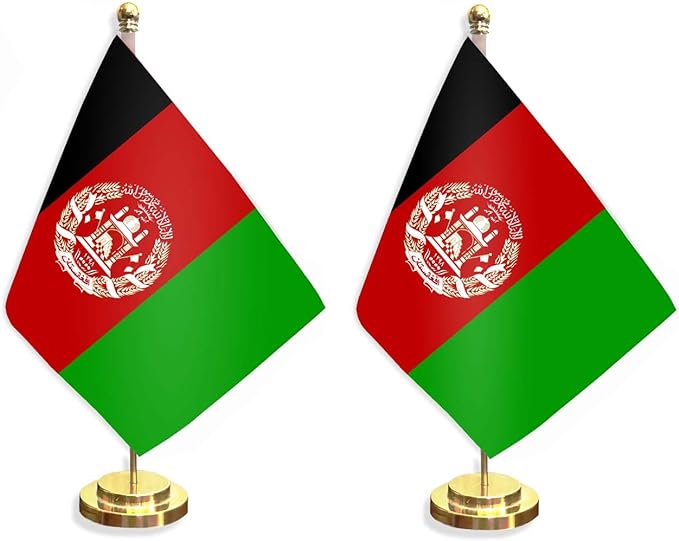The white banner of the Taliban may flutter over Afghan government buildings. Still, Afghans, both within the country and abroad, continue to defiantly display the national Afghanistan Flag (black, red, and green) in their homes, workplaces, and even their clothing.
The colors have become deeply woven into everyday life, with young people incorporating the tricolor into their fashion choices and proudly sporting bracelets reflecting the flag’s hues.
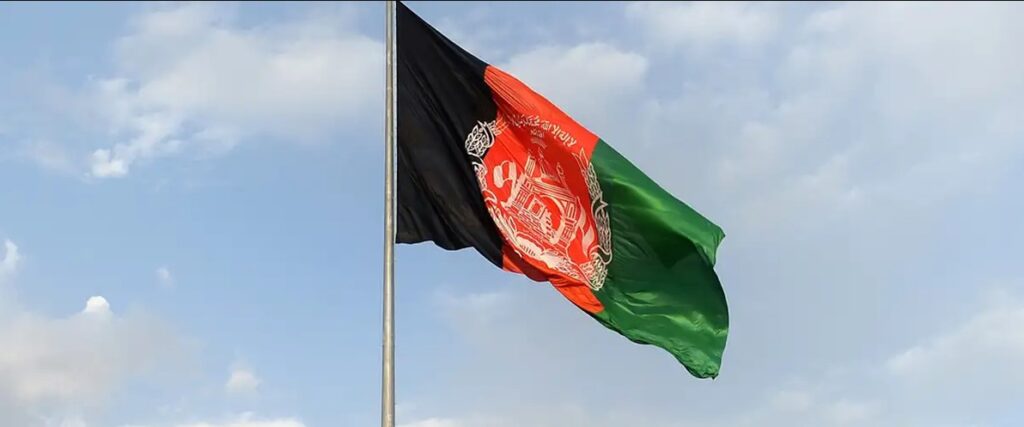
A fascinating testament to the flag’s significance came in 2014 when India gifted Afghanistan its most enormous flag. The flag dominated the Kabul skyline from Wazir Akbar Khan Hill until the Taliban took over in August 2021.
Afghanistan Flag: A Symbol of Tumultuous History

Afghanistan’s Changing Flags
The national flags of Afghanistan reveal its complex history and volatile political scene, especially in the changes that have occurred since the early 1900s. The tricolor flag has been dominant, representing different political and historical meanings through its black, red, and green stripes.
Like its land and people, Afghanistan’s flag has experienced a tumultuous history characterized by frequent change. It is one of the world’s most often modified flags, with changes usually reflecting shifts in Afghanistan’s political regimes. These changes have varied from minor design tweaks to total overhauls. The Taliban’s rise to power in August 2021 brought the latest change, replacing the traditional tricolor with their flag. The Taliban’s flag, a white banner with the Shahada inscribed in black, is a symbol of their Islamic rule and their interpretation of the country’s identity.
The Meaning and History of the Afghan Flag’s Changes
The Afghan flag underwent numerous transformations, particularly notable during the era of King Amanullah Khan. In 1928, inspired by his travels to Europe and influenced by the Weimar Republic’s flag, he introduced the tricolor design, which combined black, red, and green vertical stripes. The black stripe represents Afghanistan’s tumultuous history, particularly its status as a protected state under the influence of the British Empire during the 19th century. The red stripe symbolizes the bloodshed during the struggle for independence, notably marked by the Third Anglo-Afghan War, and the green stripe denotes hope and prosperity looking forward. It’s worth noting that some also see the green as representing Islam or agricultural success. The Weimar Republic’s flag, with its horizontal tricolor design, likely inspired King Amanullah Khan’s choice of a similar design for Afghanistan’s flag, symbolizing a connection to the modernizing and democratic ideals of the Weimar Republic.
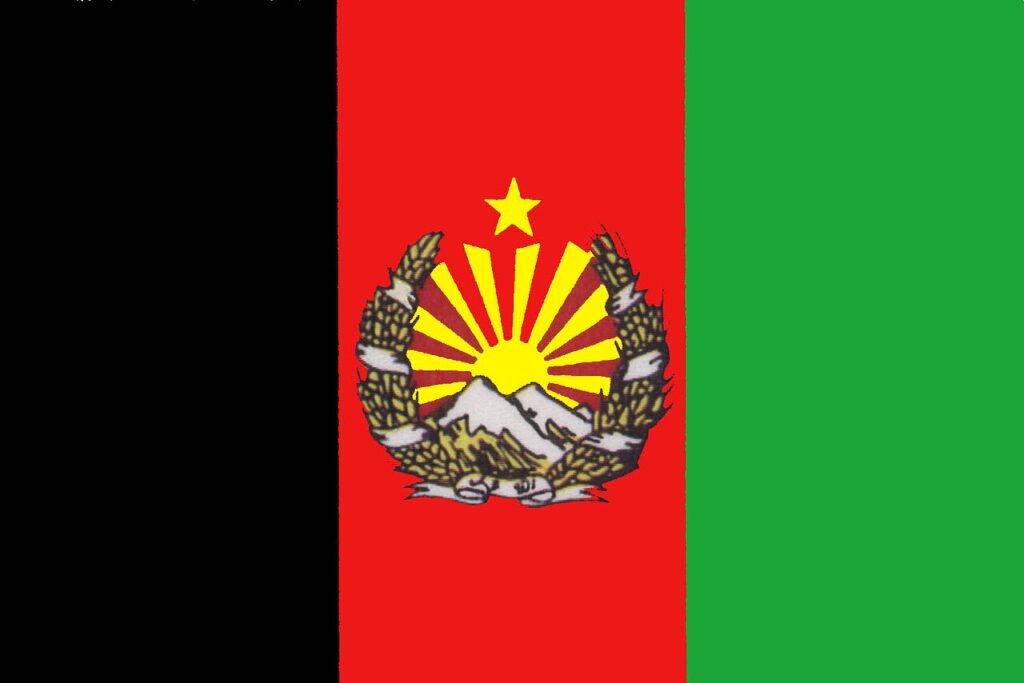
This tricolor was first introduced horizontally but was later changed to a vertical orientation and has, with some variations, been a recurring theme in Afghanistan’s national emblem. The central emblem, often encircled by wheat sheaves (representing agricultural abundance), has included symbols like a mosque, a mihrab, and minbar, and various forms of the Shahada and Takbir, reflecting the nation’s Islamic identity.
The Flag of the Islamic Emirate
In stark contrast, the flag adopted by the Taliban following their return to power in August 2021 is markedly simpler. This flag features a plain white field with a black Shahada, the Islamic declaration of faith. The choice of white symbolizes the Taliban’s claim to the purity of their Islamic beliefs and governance. This design starkly contrasts with the tricolor, signaling a significant ideological shift and a departure from the nationalistic symbols reflected in the tricolor flag.
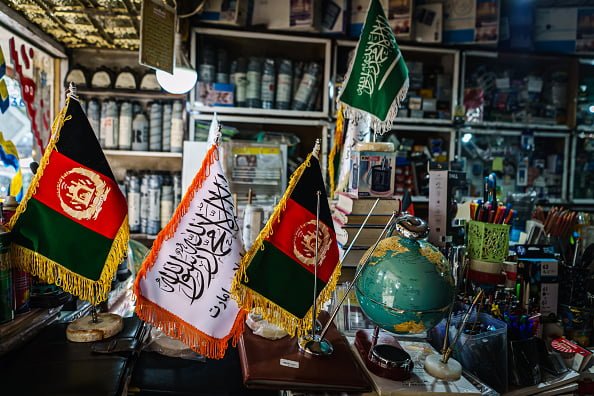
The Taliban’s white flag draws historical inspiration likely from the Umayyad dynasty, which played a crucial role in early Islamic conquests, including in Afghanistan. This choice represents a link to an Islamic golden age, resonating with the Taliban’s vision of Islamic governance.
Persistent Use of the Tricolor Globally
The Taliban’s authority and their preference for the white flag have not erased the tricolor’s significance. It remains a symbol of defiance. It is still used by the Afghan diaspora, opposition groups within Afghanistan, and in global forums where the former Islamic Republic of Afghanistan is acknowledged. For instance, it was prominently displayed during events such as the 2023 Cricket World Cup and other international sports and political and social events, indicating the recognition and importance of the tricolor Afghan flag among Afghans and on global stages.
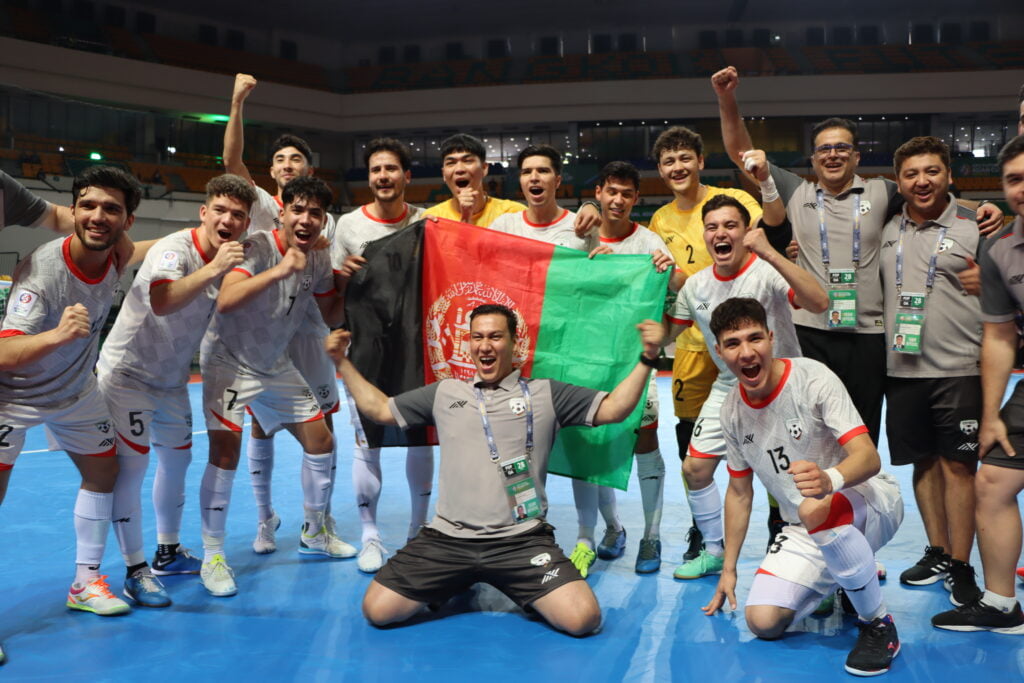
Symbolism and Political Implications
Adopting different flags in Afghanistan is more than just changing national symbols; it reflects profound political and cultural shifts within the country. The tricolor flag symbolizes Afghanistan’s modern national identity, forged through decades of conflict and aspirations for peace and prosperity. In contrast, the Taliban’s flag underscores a return to fundamentalist roots and a rejection of the republic’s values.
This ongoing evolution of Afghanistan’s flags highlights the country’s complex history of conflict, cultural shifts, and the continuous struggle for national identity and governance. Each flag represents political authority and embodies the broader socio-political narratives that continue to influence Afghanistan’s future.
Now, let’s look at how Afghanistan’s history shaped the changes in its flag over time.
Early Flags and the Rise of Modern Afghanistan Flag
Afghan historians believe that the inhabitants of present-day Afghanistan have used flags as markers of identity for thousands of years.
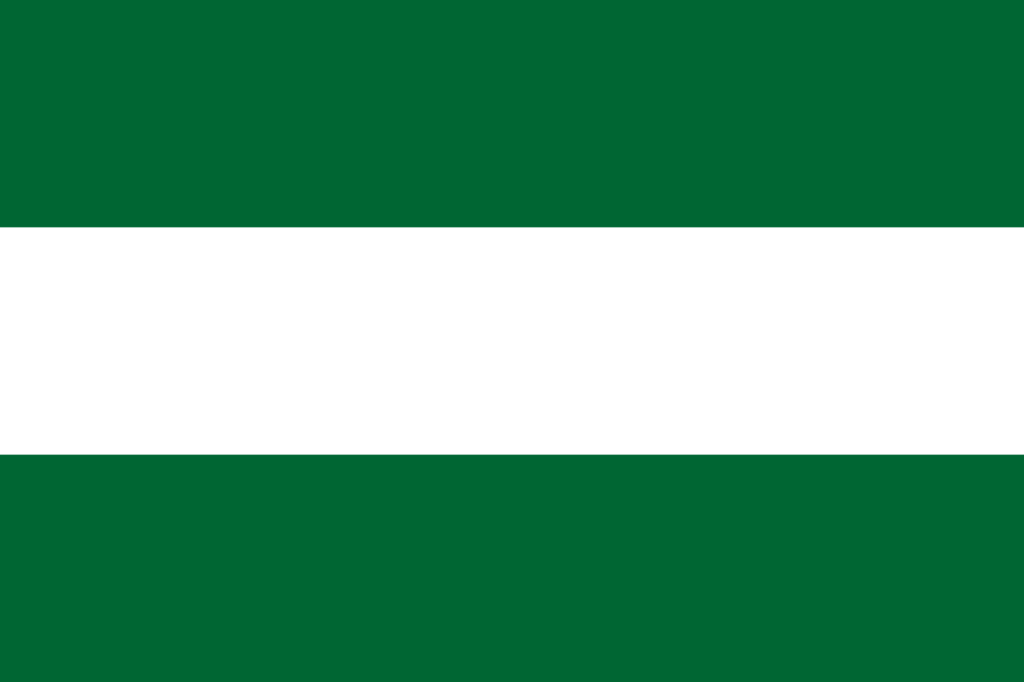
In modern Afghan history, Ahmad Shah Durrani, revered as the founder of modern Afghanistan, ascended to the throne in 1747 and established the Durrani Empire. Historians believe that several Durrani kings used the green and white flag.

Another known flag belonged to Sher Ali Khan, who became king in 1863. His flag was simply black, without any emblem.
In 1901, when Habibullah Khan succeeded as the king of Kabul, he added the emblem of the Afghan state to the black flag. This emblem served as a precursor to the current one.
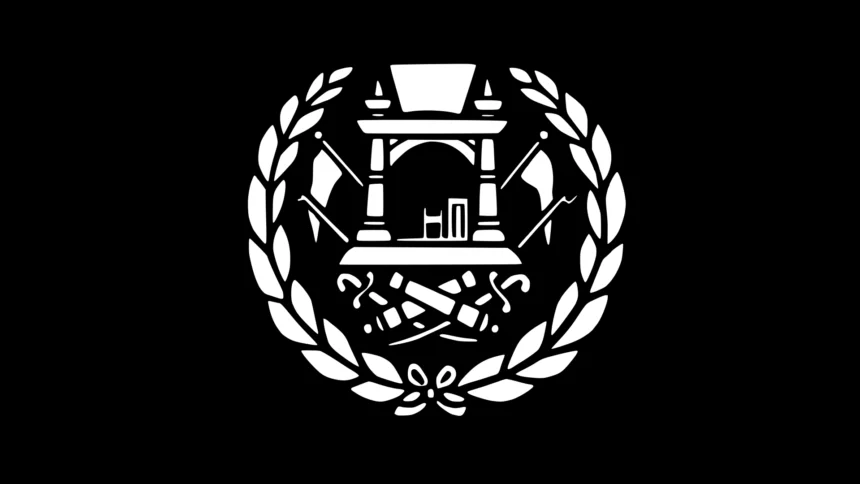
However, Afghanistan’s traditional tricolor national flag emerged during the reign of Habibullah Khan’s son, Amanullah Khan. After his father’s assassination in 1919, Amanullah Khan embarked on a period of significant reform, including three flag changes.
Initially, he modified the emblem on his father’s black flag, giving it eight points resembling rays. The second change maintained the black background but replaced the rayed emblem with a symbol of wheat sheaves.
Upon returning from an extended European trip, Amanullah Khan redesigned the flag again, introducing the now-familiar black, red, and green tricolor. Some historians theorize that Germany’s flag inspired this choice. The new flag also featured a slightly modified version of the emblem from his previous rule.
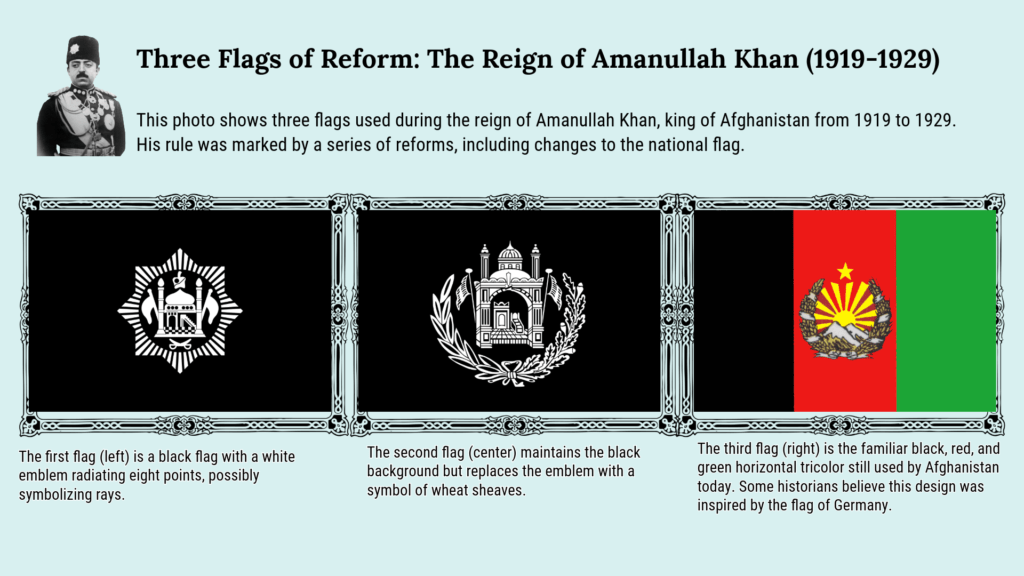
Habibullah Kalakani and Changing the Flag of Afghanistan
Following Amanullah Khan’s departure due to internal unrest, Habibullah Kalakani seized power in January 1929. During his brief nine-month rule, he redesigned the Afghan flag, adopting a red, black, and white tricolor and removing the government emblem.
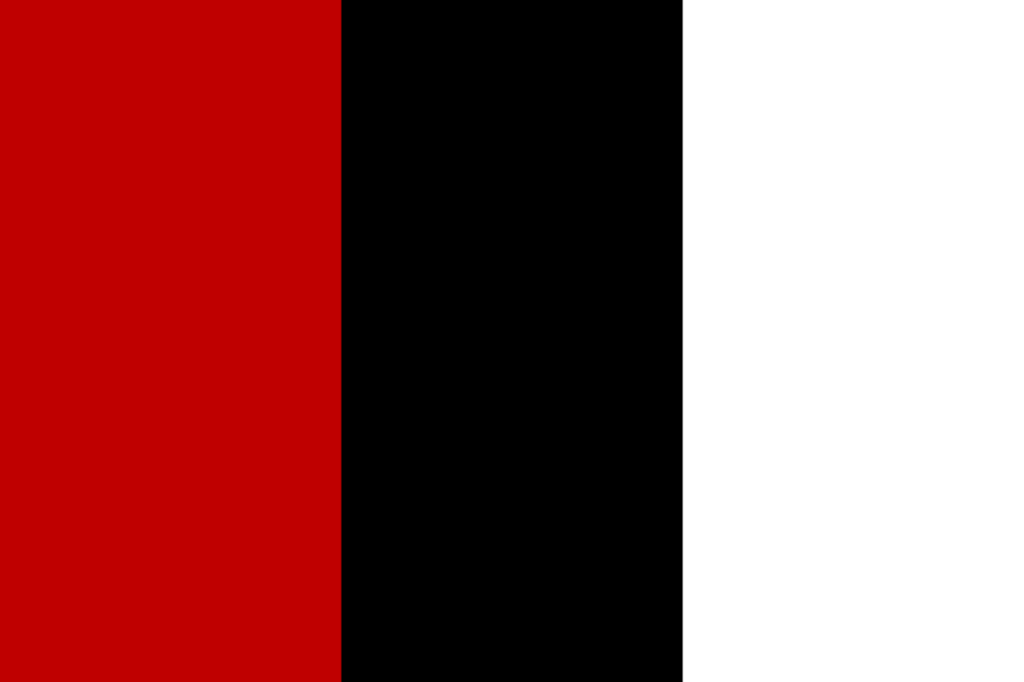
Habibullah Kalakani’s reign and his flag proved short-lived. In October 1929, Nadir Khan (later Mohammed Nadir Shah) came to power and promptly restored the old state emblem and the previous black, red, and green tricolor.
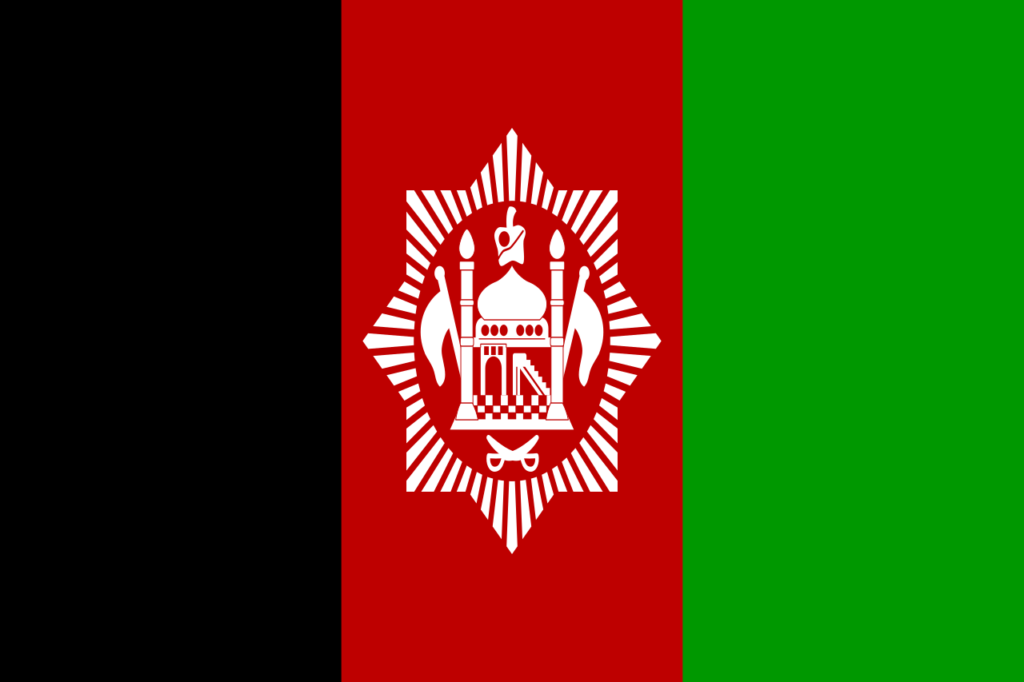
Shortly after that, Mohammad Nadir Shah further modified the flag. He enlarged the government emblem and added the lunar year 1348, commemorating his ascension to power. This flag, with only minor subsequent changes, endured the longest in Afghanistan’s modern history. It remained used throughout the forty-year reign of Nadir Shah’s son, Muhammad Zahir Shah, with minimal alterations from 2001 to 2021.
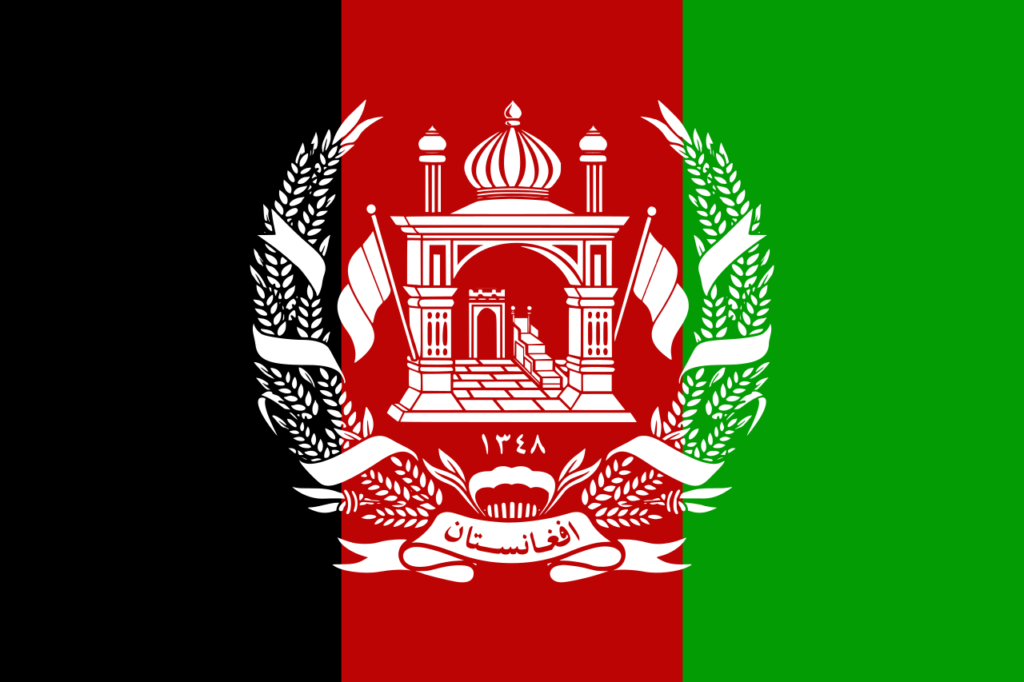
The First Republic of Afghanistan and the Change of Flag
In 1973, following a coup, Mohammad Daud Khan proclaimed the first Republic of Afghanistan and redesigned the flag. While retaining the black, red, and green tricolor, he altered their proportions, sequence, and symbolic interpretations. The state emblem was also modified and repositioned to the corner of the flag.
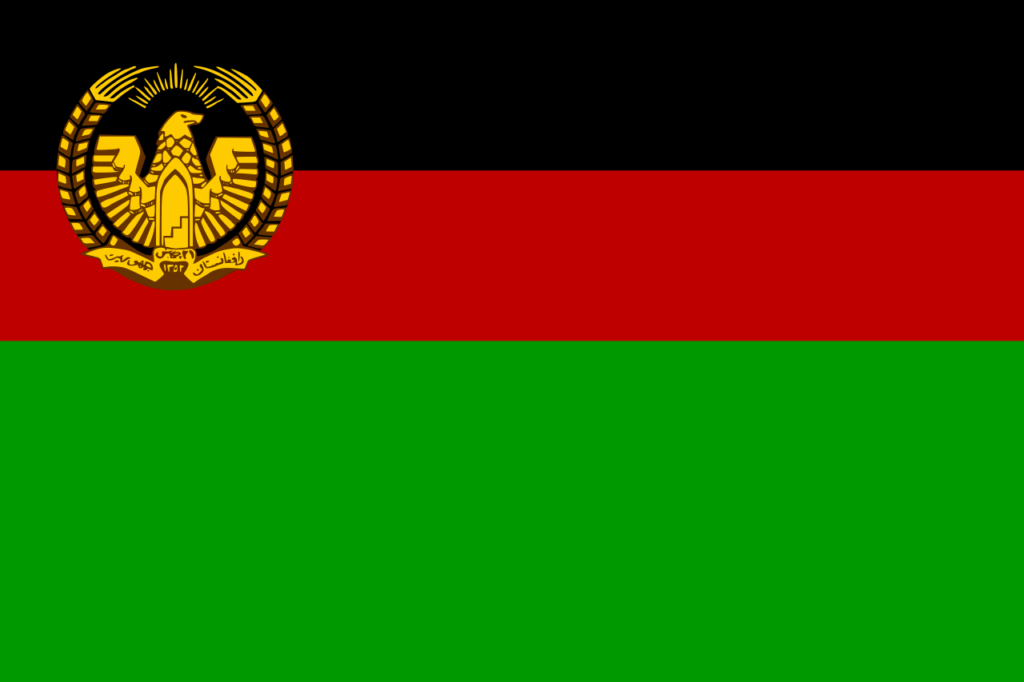
Upon the communist coup d’état in April 1979, Nur Muhammad Taraki became the first leader of the new regime. Initially, he maintained a modified version of the existing flag, simply removing the emblem. However, he soon replaced it with a solid red communist flag bearing a new state logo featuring the word “Khaleq” (meaning “The People”) in Persian/Pashto script.
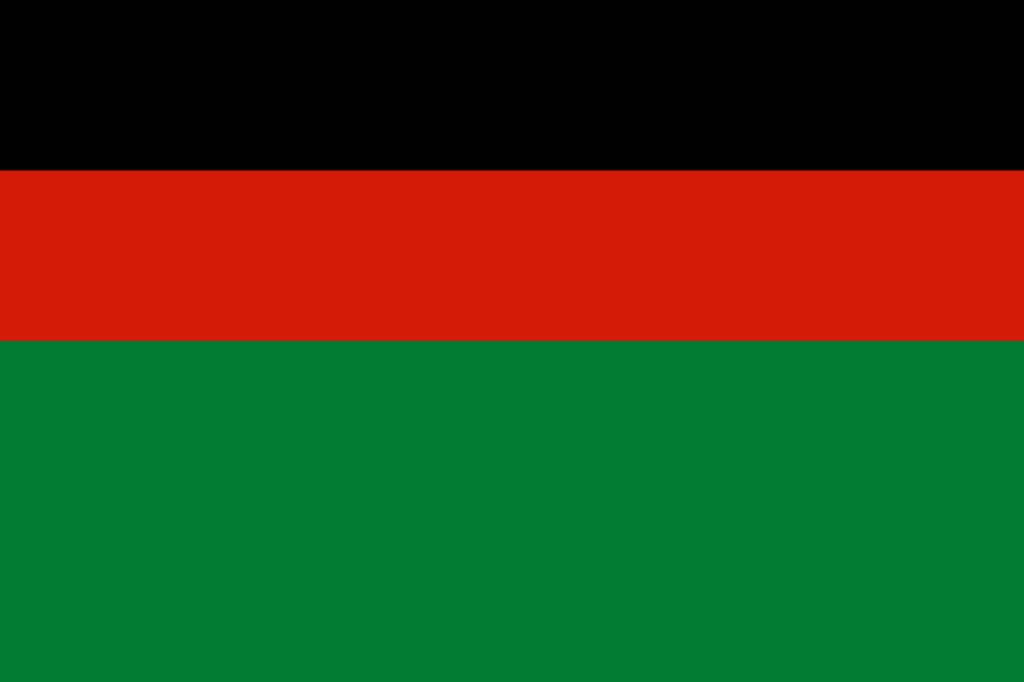
This flag remained in use throughout the short reigns of Taraki and Hafizullah Amin. Following the Soviet invasion, Babrak Karmal came to power and restored the traditional tricolor of black, red, and green. He also introduced a new version of the national emblem in the corner.
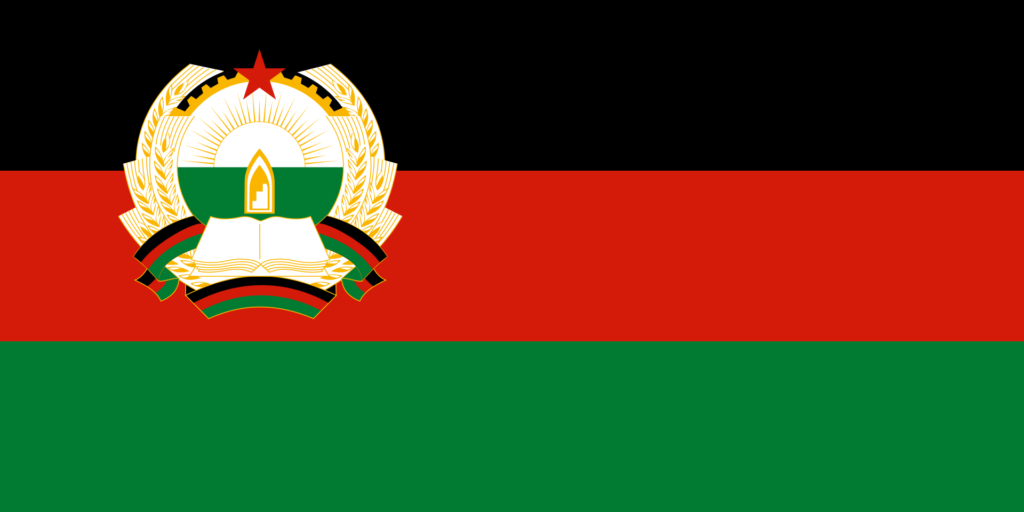
In the later years of the communist state, the flag was further modified by removing the red star and the book symbol.
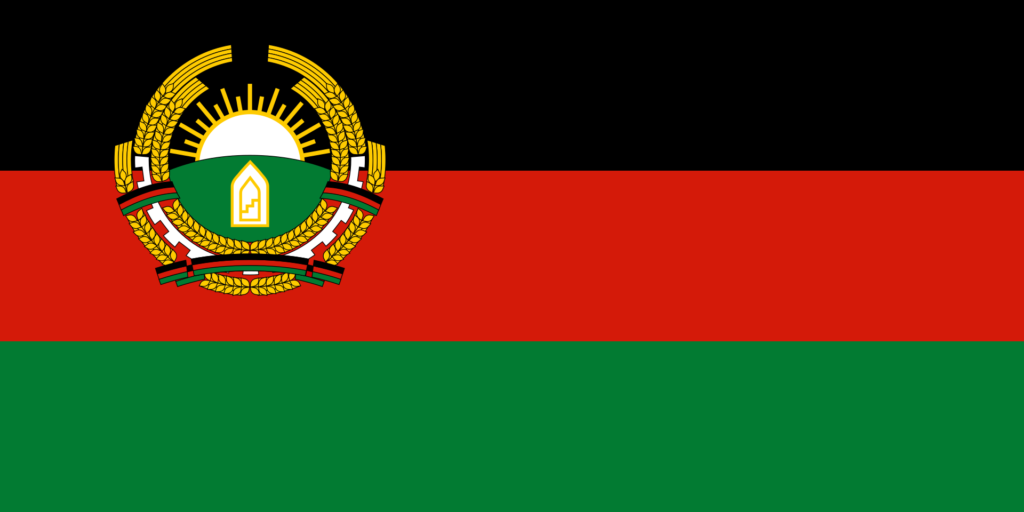
Afghan Mujahideen Rule, Civil Wars, and a New Flag
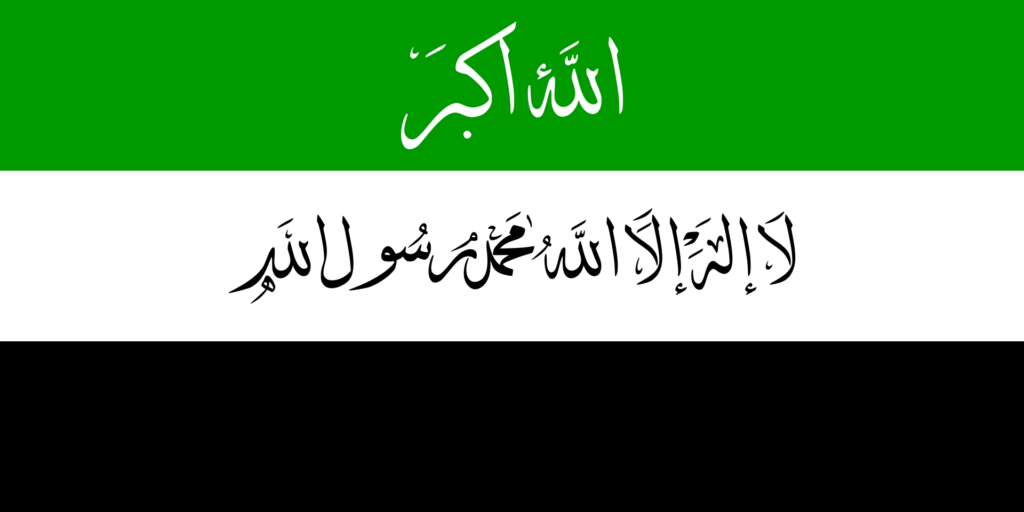
In 1992, the Mujahideen overthrew Dr. Najibullah’s government, with Sibghatullah Mujadidi assuming leadership. The Afghan flag underwent another change, now featuring horizontal stripes of black, white, and green. Initially, the “Allahu Akbar” (God is Great) inscription and the Shahada (Islamic declaration of faith) were central elements.
After Burhanuddin Rabbani became the president of the Mujahideen government and declared the Islamic State of Afghanistan, a new state symbol was incorporated in the national flag.
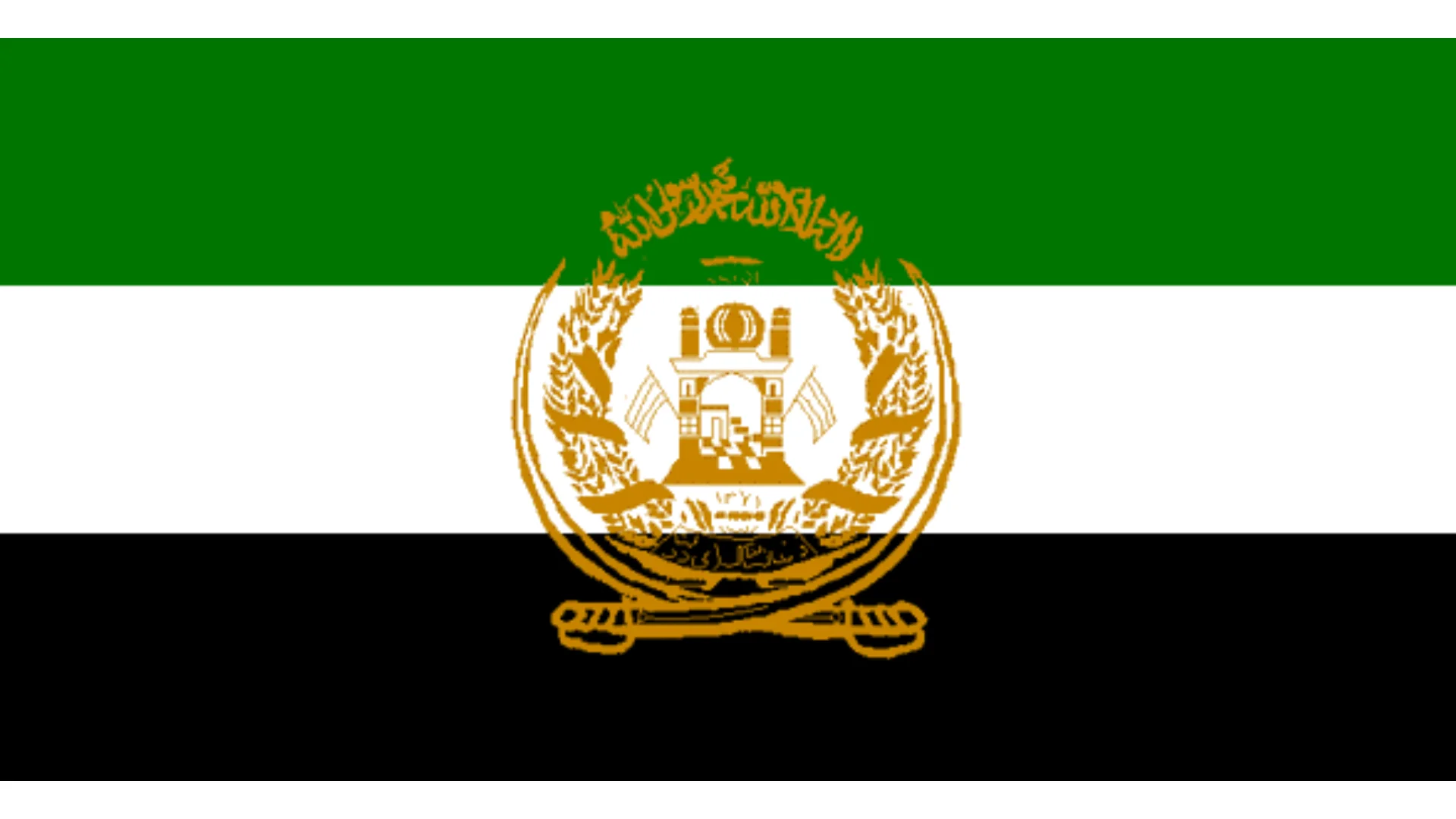
The Taliban’s First Rule and the White Flag
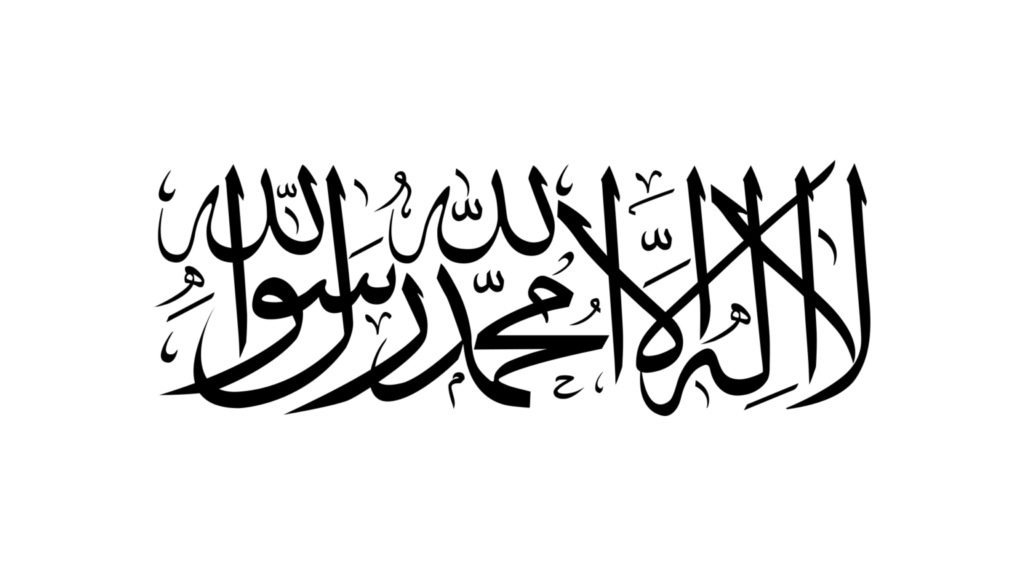
The Taliban’s capture of Kabul in late September 1996 announced the Islamic Emirate of Afghanistan and a stark white flag bearing the Shahada (Islamic declaration of faith). Following the September 11th, 2001 attacks, the United States led an invasion that toppled the Taliban regime. This led to establishing the Transitional Government of Afghanistan under Hamid Karzai, later replaced by the Islamic Republic of Afghanistan. The old black, red, and green tricolor was reinstated as Afghanistan’s national flag.
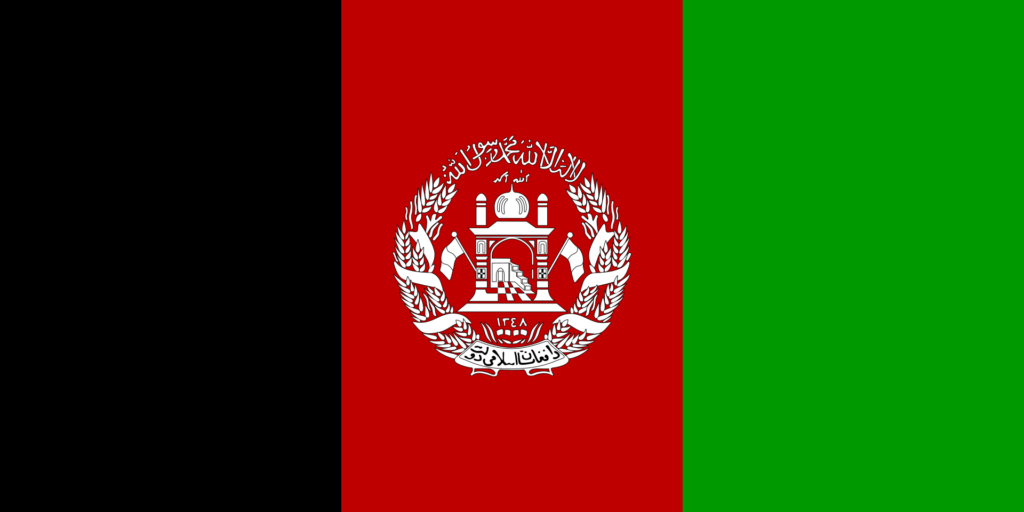
Constitutional Recognition
In 2004, Afghanistan’s constitution formally enshrined the design of the flag and national emblem. Article 19 states:
“The flag of Afghanistan shall consist of three equal parts, with black, red, and green colors juxtaposed vertically from left to right.
The width of every color shall be half of its length, and at the center of which the national insignia shall be located.
The national insignia of Afghanistan shall be comprised of an emblem and a pulpit in white color—at the two corners of which are two flags, inscribed in the top middle the holy phrase “There is no God but Allah and Mohammad is his Prophet, and Allah is Great.” This shall be inscribed and superseded on rays of a rising sun, and in its lower part, the year 1919 in the solar calendar, and the word “Afghanistan” encircled on two sides by sheaves of wheat shall be inscribed.
The law shall regulate the use of the flag and insignia.”.
Afghanistan’s constitution, 2004
During Mohammad Ashraf Ghani’s presidency, a National Flag Day (7th of Asad, July 29th in some years) was established, marked by annual celebrations.
Afghanistan Flag; Symbol of Unity
Shukriya Barakzai, a member of both the flag preparation commission and the Constitutional Grand Jirga during Karzai’s tenure, emphasizes that the current Afghan flag represents the collective history, identity, and struggles of the Afghan people. She notes widespread consensus during its design and approval.
Return of the White Flag
The Taliban’s return to power in August 2021 brought another abrupt change to Afghanistan’s national symbol. They swiftly replaced the tricolor flag with their white banner, representing the Islamic Emirate of Afghanistan. This decision sparked widespread objections from many Afghans who urged the Taliban to preserve national symbols like the flag.
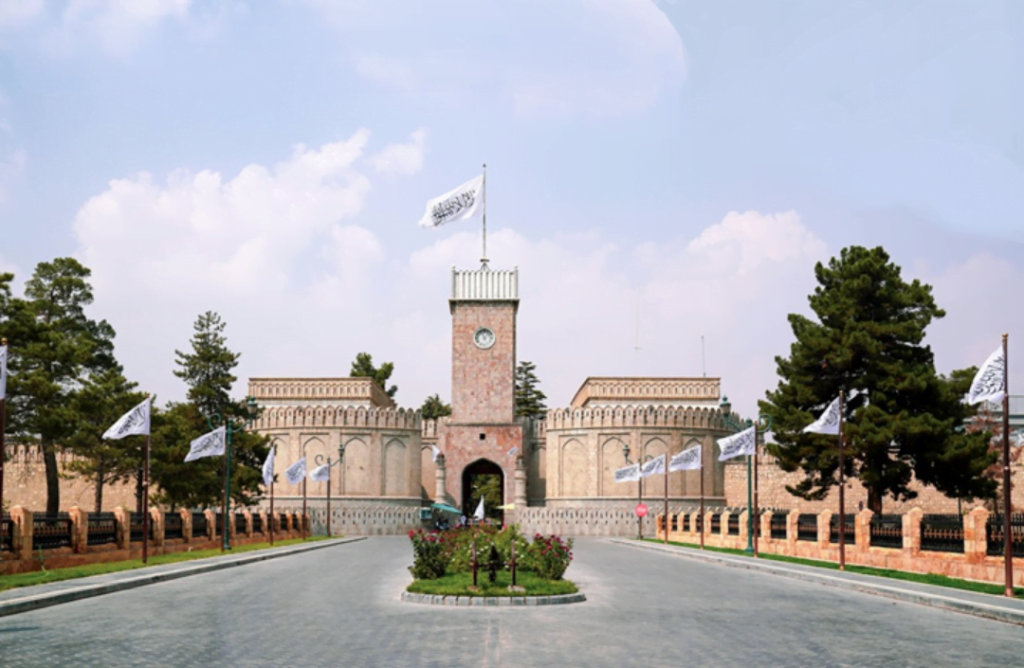
While the Taliban initially suggested that the flag’s future would be determined based on public sentiment, their subsequent inaction suggests an unwillingness to reinstate the tricolor. Despite the change made by the Taliban, most Afghans continue to view the black, red, and green tricolor as their national flag, displaying it prominently in their homes, businesses, and vehicles.
Internationally, the tricolor remains recognized by organizations like the United Nations and sports federations. Afghan athletes proudly represent their country on the world stage under this banner, and Afghan representatives at international bodies continue to use the tricolor flag.





